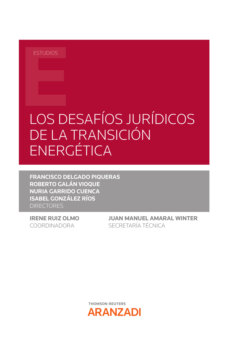Читать книгу Los Desafíos Jurídicos de la Transición Energética - Isabel González Ríos - Страница 21
На сайте Литреса книга снята с продажи.
II. CURRENT SITUATION IN POLAND
ОглавлениеAs was already aforementioned in the introduction, the Polish economy is still based largely on fossil fuel-based generation sources. In view of constantly rising prices of the CO2 emission allowances and the necessity of incurring significant modernisation and investment expenditures, this situation is not favourable for the domestic industry (including especially energy-intensive industry) and household consumers. In accordance with the Draft of National Plan for Reconstruction and Enhanced Resilience, which is a Polish programming document for reconstruction and building socio-economic resilience after the crisis caused by the COVID-19 pandemic, prepared on the basis of Regulation (EU) 2021/241 of the European Parliament and of the Council of 12 February 2021 establishing the Recovery and Resilience Facility1, the share of coal in the electricity mix in Poland has been steadily declining, but at the end of 2019 was still approximately over 70%. In the national electricity system, as of the end of 2019, the gross installed capacity of electricity amounted to almost 47 GW, of which more than 36.5 GW were large utility power plants based primarily on hard coal and lignite, and to a lower extent on natural gas and old units of so-called large hydropower plants. Renewable energy sources capacity, especially the older wind turbines, represented only about 7.5 GW. Constantly rising prices of carbon emission allowances (according to European Energy Exchange (EEX)2 at the beginning of September 2021 the allowance prices approached the level of 62 EUR/EUA) drive up energy prices for households and enterprises in Poland, which directly leads to the risk of increasing energy poverty of the poorest citizens and visible increase in prices of products and services (forecasted inflation level in 2021 in Poland may approach the ceiling of 5.5%). Such a situation undoubtedly has a negative impact on the competitiveness of the economy, especially in times of recovery from the crisis caused by the COVID-19 virus pandemic.
Transformation towards a climate-neutral economy in Poland is primarily a decarbonization process of energy sector, transportation and processing industry. It requires significant financial outlays, planning in a long-term time horizon, but also socio-economic changes, associated with major alterations in the shape and profile of the regional economy. For example, it should be clearly indicated that the domestic hard coal and lignite mining sector is currently responsible for the employment of more than 80 thousand employees and strongly influences other industries within the so-called mining-related and associated sectors. From the sociological point of view, therefore, social resistance and fears of losing the basic source of income should not come as a surprise. In the recent months, the protests of miners and coal energy workers on the streets of Warsaw were connected, among others, with a rather high-profile case of Turow open pit lignite mine near the border of the Republic of Poland with the Czech Republic. The Czech Republic has filed a lawsuit against Poland in the Court of Justice of the European Union in connection with the planned expansion of mining and operation of the open pit mine, which, according to the Czech side, will significantly impact the lowering of groundwater levels and hydrological problems in border areas. The government in Prague has demanded an immediate halt to mining and has requested that fines of up to EUR 5 million a day be imposed on Poland. Although the extremely important environmental aspect of this case, it cannot be ignored that such events unfortunately cause a lot of social difficulties. It is important, however, to try to conduct Poland’s energy transition within a kind of evolution (rather than an overly abrupt revolution) to limit the negative socio-economic impacts associated with changes in the mining sector and related industries.
In addition to the progressive elimination of coal-fired capacity from the national electricity system and the closure of unprofitable coal and lignite mines, decarbonization should be associated with the need to provide new sources of energy. Investments in low- and zero-carbon energy sources are therefore crucial, including primarily increasing the use of renewable energy sources such as wind and solar power, as well as providing for them flexible back-up capacity. Poland, by small steps, has made significant progress in recent years in reducing the negative environmental impact of the energy sector. Carbon dioxide emissions are being gradually reduced. In terms of electricity and heat generation, in 2018 it decreased by more than 30% compared to 1990. The potential for renewable energy generation and use is also gradually being developed, however, this process still faces numerous obstacles and barriers (including legal obstacles) and requires significant improvement. The share of electricity from renewable sources in gross final energy consumption in Poland was a little over 12% in 2019, against the target of 15% in 2020 adopted in the Europe 2020 strategy.
It should also be noted that in addition to significant carbon emissions, the reliance of the Polish economy on fossil fuels also has other real consequences for environmental damage, including especially air pollution. According to a 2018 World Health Organization report, as many as 36 of the 50 most polluted cities in the European Union were located in Poland. As it seems, exposure to smog and inhalation of air pollution negatively affects the immune system, increasing susceptibility to respiratory infections, and this could have real consequences in times of the COVID-19 virus pandemic.
